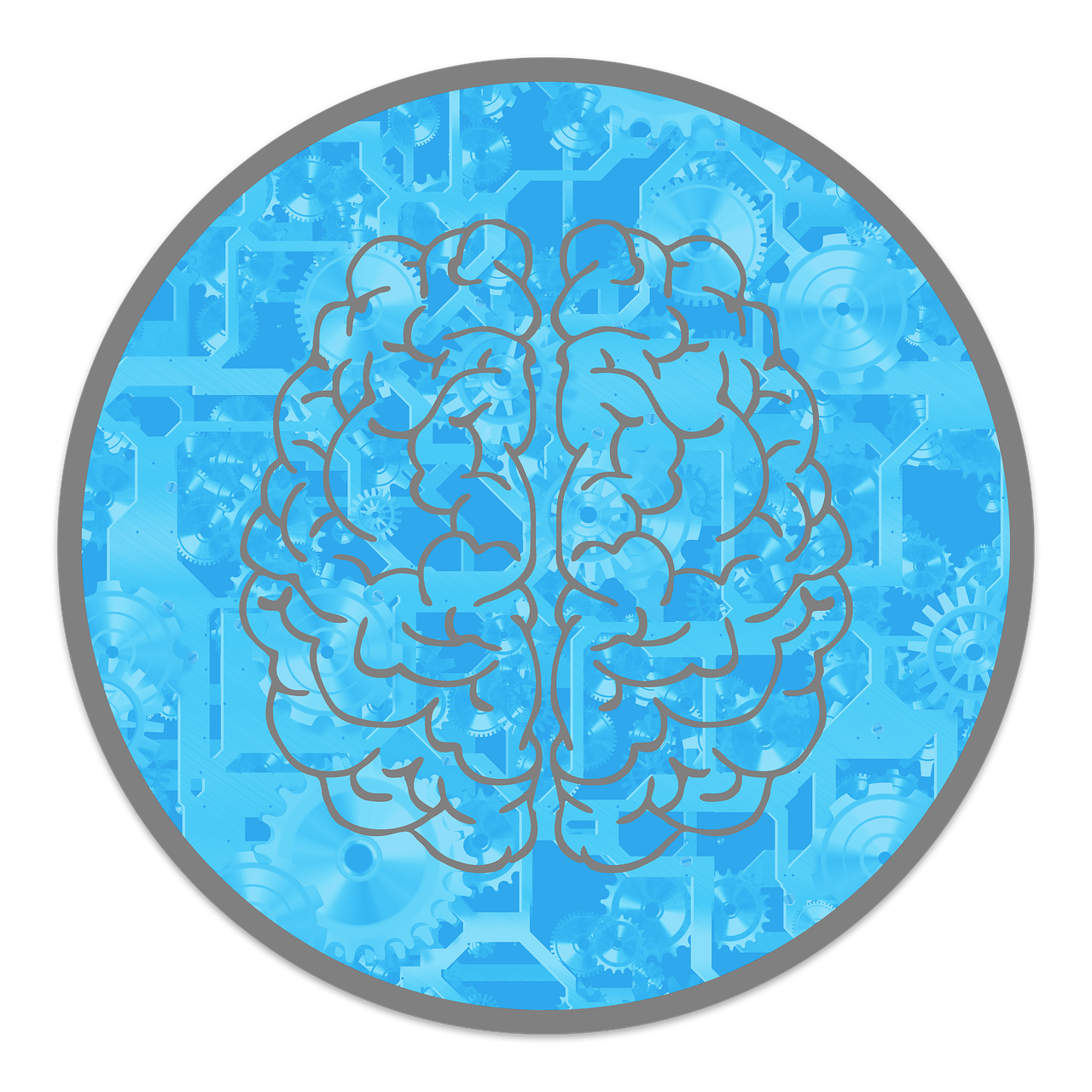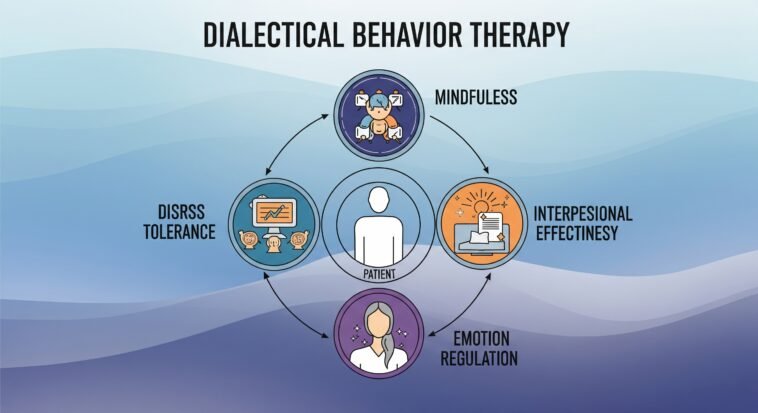
Feeling like your emotions are running the show? You’re not the only one.
A lot of people deal with overwhelming feelings that mess with their relationships, work, and daily life.
That’s where DBT (Dialectical Behavior Therapy) comes in.
It was originally built to help people with borderline personality disorder, but now it’s used way beyond that—for anyone who struggles with emotional ups and downs.
Whether it’s anxiety, depression, trauma, or just wanting more control over how you react, DBT gives you tools that actually help.
What Makes DBT Different from Other Therapies?
DBT isn’t just another version of CBT.
What sets it apart is the idea of dialectics—basically, that two things can be true at once.
You can accept where you are and want to change.
That’s huge for people who are used to beating themselves up in therapy for not being “better” fast enough.
It blends practical tools from CBT with mindfulness skills—like noticing what you feel without getting totally swallowed by it.
That combo helps you work with your emotions, not against them.
It’s not a magic fix.
But research backs it up: DBT has helped reduce things like self-harm, suicidal thoughts, and hospital stays.
And for a lot of people, it makes everyday stuff—like relationships or staying grounded—feel way more manageable.

The Four Core DBT Modules: Your Roadmap to Emotional Freedom
DBT isn’t just about theory.
It’s a skills-based system that teaches you how to actually deal with tough emotions, relationships, and crisis moments.
Here’s how it’s structured:
Module 1: Mindfulness
Mindfulness is where it all starts. It’s not about zoning out on a mountain.
It’s about noticing what you’re feeling, thinking, and sensing right now—without reacting or judging yourself.
Core tools:
- Wise mind = Balancing logic and emotion so you make grounded choices
- Observe, describe, participate = Noticing what’s happening and naming it
- Non-judgmentally, one-mindfully, effectively = Staying in the moment and focusing on what works
You can do this anytime—waiting in line, arguing with your partner, washing dishes.
The more you practice, the more space you build between feeling something and reacting to it.
Module 2: Distress tolerance
Sometimes emotions hit so hard, you just want to blow everything up or shut everything down.
This module gives you tools to ride out that wave without doing something you’ll regret.
Short-term tools (TIPP):
- Temperature: Splash cold water or hold ice to calm your body fast
- Intense exercise: Move your body hard and fast to burn off stress
- Paced breathing: Slow, steady exhale to calm your nervous system
- Paired muscle relaxation: Tense/release muscles to release tension
Distraction tools (ACCEPTS):
Think of these as temporary mental resets—like texting a friend, watching stand-up, or doing a puzzle when you’re about to spiral.
Radical acceptance:
This is the hardest skill, but it’s powerful.
It means fully accepting that something painful is happening—without fighting it, without shutting down.
You don’t have to like it.
You just stop arguing with reality.
Module 3: Emotion regulation
If your emotions tend to explode or linger for days, this module helps you get a grip.
It teaches you to notice your emotional patterns, catch the early signs, and respond without going off the rails.
- Start with the basics (PLEASE):
- Physical illness – take care of it
- Leave mood-altering stuff (drugs/alcohol)
- Eat regularly
- Sleep enough
- Exercise
Other key tools:
- Name what you feel: Saying “I feel anxious” is better than just stewing in it
- Opposite action: If the urge doesn’t match reality, do the opposite (e.g. feel like isolating? Text someone instead)
You’re not trying to erase your feelings. You’re trying to make sure they don’t run the show.
Module 4: Interpersonal effectiveness
Relationships are hard, especially when you’re trying to set boundaries, say what you need, or just not blow up.
This module gives you language and structure so you can be clear, kind, and still respect yourself.
Need something? Use DEAR MAN:
- Describe what’s going on
- Express your feelings
- Assert what you need
- Reinforce why it’s worth it
- Mindful: Stay focused
- Appear confident (even if you’re shaky inside)
- Negotiate when needed
Want to keep a relationship strong? Try GIVE:
- Be Gentle
- Show you’re Interested
- Validate their view
- Use an Easy manner
Trying to hold on to your self-respect? Use FAST:
- Be Fair
- Don’t Apologize when you’re not wrong
- Stick to your values
- Be Truthful
These skills are especially helpful if you’ve ever been the “people-pleaser,” the “exploder,” or the one who says yes and hates it later.

Practical Applications: Integrating DBT into Daily Life
Skills don’t stick unless you use them in real life.
Here’s how to build them into your day so they’re there when you need them:
Morning practice
Before you grab your phone, sit for five minutes. Just breathe and notice.
That’s your mindfulness warm-up.
No pressure to “clear your mind.”
Just pay attention to being awake, breathing, alive.
Maybe remind yourself: “I’m going to use DBT skills today, even if it’s messy.”
Skill rehearsal
Don’t wait for a meltdown to try new skills.
Use TIPP or breathing exercises when traffic gets annoying or when your phone freezes.
The more you rehearse these in calm moments, the more automatic they’ll feel when you’re spiraling.
Evening reflection
At the end of the day, think about one moment when you used a DBT skill.
What worked? What didn’t? Would you do it the same way again?
This isn’t about judgment—it’s about learning from your actual day, not from theory.
Environmental modifications
You won’t always remember DBT skills in the heat of the moment.
So put reminders where you’ll see them.
- A sticky note in your wallet with DEAR MAN steps
- ACCEPTS or PLEASE skills on your fridge
- A calendar alert that just says “pause + breathe”
You’re not trying to live a perfect DBT life.
You’re just trying to give yourself more chances to pause, choose, and not let old habits take over.
Who Can Benefit from DBT Techniques?
DBT started as treatment for borderline personality disorder, but it’s useful for way more than that.
You don’t need a diagnosis to benefit.
If any of this sounds familiar, DBT might be worth looking into:
- You feel emotions hit hard and fast, and they’re hard to shake
- You say or do things you regret when upset
- You feel stuck in toxic relationship patterns
- You numb out with substances, food, screens, or self-harm
- You deal with chronic anxiety, depression, or trauma
- You get angry fast, and it ruins moments or relationships
- You judge yourself constantly, even when you’re trying hard
- You overanalyze everything and still don’t feel in control
Even if you’re just looking to handle stress better or communicate without blowing up or shutting down—DBT gives you tools that are practical and direct.
This isn’t a fix-all. It’s a set of skills. You still have to practice.
But for a lot of people, it makes a difference.
Building Your DBT Toolkit: Essential Resources
If you’re serious about using DBT in real life, it helps to have a few tools ready:
- A notebook — nothing fancy. Just something to track which skills you tried, what worked, and what didn’t. Jot down patterns. Be honest.
- An app — something like DBT Coach or Youper. Set reminders, get prompts, and have skills in your pocket when you need them.
- One or two people who get what you’re working on. Doesn’t need to be a big support group—just someone who won’t dismiss your progress.
- A go-to stress outlet — walking, drawing, stretching, whatever calms your nervous system. DBT skills stick better when your baseline stress is lower.
- A therapist or DBT group — especially if things get heavy. Some skills are hard to learn alone, and some emotions are just too big to handle without backup.
You don’t need all of this at once.
Start with what you can manage and build from there. The goal isn’t perfection—it’s consistency.

Conclusion: Your Path to Emotional Mastery
DBT isn’t about fixing emotions—it’s about learning how to live with them without losing yourself.
These skills—mindfulness, distress tolerance, emotion regulation, and communication—give you tools to handle life when it’s messy, not just when things are calm.
It takes time. You’ll mess up. That’s normal.
What matters is showing up and practicing anyway.
You don’t need to master everything at once. Just start where you are.
Pick one skill. Try it. Adjust. Keep going. Emotional growth is slow, but it adds up.
This stuff works—when you work it. Your future self will thank you for trying.



